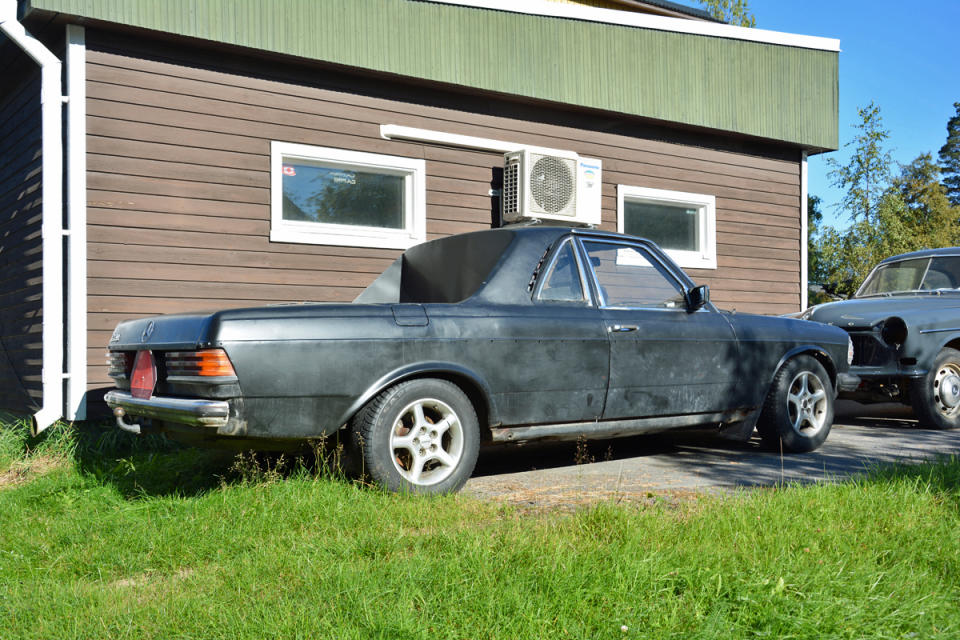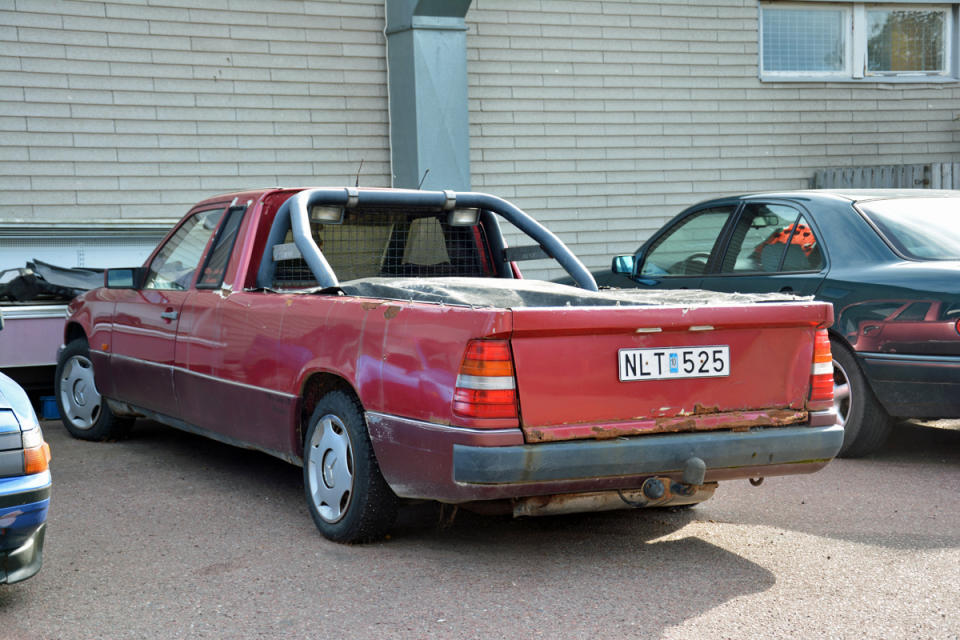How Swedish Teens Use Home-Built Pickup Trucks to Drive Without a License

Some of the most interesting cars that Sweden has to offer are hiding in small, rural towns, not in museums. That's because 15-year-olds are allowed to drive virtually any type of car, without a driver's license-if it's been converted into a two-seater pickup, and modified to top out at about 20 mph.
(Editor's Note: This post originally appeared on Hemmings Daily. It is reprinted here with permission.)
These homemade pickups are considered tractors by Swedish law, and they've been around for nearly a century. In the early days, real tractors were expensive and difficult to come by, so skilled DIY-ers began chopping up cars (often Ford Model As) to use them in the fields. The conversion became popular enough that the government wound up writing laws that outlined what farmers were and weren't allowed to do if they chose to build their own tractor.
The one-of-a-kind creations became known as EPA tractors. A taxi driver that I talked to in Gothenburg explained that EPA was a store that sold low-priced goods, kind of like Lidl or Aldi in Europe today. In popular culture, the name "EPA" became synonymous with something that's affordable, home-made, and a little off-beat. Use a rope to hold up your pants and you've got an " belt;" turn a Volvo PV544 into a tractor and you've just built an "EPA tractor."

The popularity of "EPA tractors" diminished as real, purpose-built tractors became easier to find and much cheaper. They were nearly extinct by the time law-savvy teenagers realized that they could legally drive an EPA tractor before turning 18, the minimum age for getting a driver's license in Sweden. For them, it meant being able to move around freely, and getting out of the cold in the winter. Suddenly, EPA tractors were popular again.
Regulations stated that EPA tractors had to have a frame, a wheelbase that stretched no more than 88 inches long, and an unsprung rear axle. New regulations introduced in 1963 created a second type of home-made tractors called A tractor that existed alongside EPA tractors for over a decade. "A tractors" could be based on a car with unibody construction, their wheelbase didn't need to be modified, and they were allowed to have a rear suspension. While there are still a few EPA tractors left on Swedish roads, all new conversions must comply with "A tractor" regulations.

So all it takes to drive at 15 in Sweden is an old car and an angle grinder? Not quite: The process is more complicated than that, and it involves several major modifications.
An A tractor needs to be based on a production car, not built from scratch. Additionally, it has to be road-worthy before the conversion, so buying a wrecked car out of a scrapyard doesn't cut it. Swedish law dictates that A tractors must be modified to ensure that they can't transport more than two passengers including the driver, meaning even dual-cab pickups need to be converted into single-cab trucks, and the rear cabin wall can't be more than 10 centimeters (about four inches) away from the front seats. Finally, every A tractor needs to have a reflective warning triangle on the back, a small cargo compartment above the rear axle, and a hitch-it's a tractor, after all.

A majority of A tractors on Swedish roads are based on older Volvos. That's hardly a surprise, because a majority of the cars in Sweden are Volvos, even today. Some are so well done that they look factory-built, while others are rolling piles of Bondo that look like they were built to last until the owner turns 18 and buys a normal car-not a minute more. Regardless, every A tractor needs to be inspected by a certified garage before it's registered for the first time.
A tractors need to be built in a way that going above 30 km/h (roughly 20 mph) on a flat road can only be achieved with "great difficulty," according to Swedish law. That means young Swedes must either disable the top gears in the transmission, or add a reduction gearbox to the driveline. Solutions for disabling the gears include grinding down the teeth, or simply removing the gears altogether. However, adding a reduction gearbox is the only acceptable solution if the car is equipped with an automatic transmission.

Alternatively, making modifications to the valve timing by replacing or grinding down the camshaft is an acceptable way of making sure an A tractor doesn't exceed 20 mph regardless of which gear is engaged. Limiting the movement of the throttle pedal isn't allowed, presumably because it's too easy to bypass.
That said, most younger people I talked to quietly admitted that A tractors usually feature some kind of concealed device that allows them to go above 30 km/h, though none were willing to tell me what it is or show me how it works. It's kind of an open secret in Sweden, a "don't tell and we won't ask" deal that teens have with law enforcement authorities. It's worth mentioning that A tractors are largely seen in rural areas. They're so few and far between in big cities like Stockholm that I've talked to urbanites who didn't know the tractors existed because they never make it out to the countryside.

It's easy to understand why there aren't any A tractors in Stockholm, where the public transportation system is extensive and reliable. However, in rural towns they're a common part of the automotive landscape. And, while you could argue that teens are poaching classics, A tractors help turn them into gearheads at an early age, ensuring that the next generation of licensed drivers will keep Sweden's remarkable car culture alive. In the United States, tinkering with cars at a young age isn't uncommon; in Europe, it's downright rare.
Ronan Glon, who writes at the fantastic blog Ran When Parked, recently discovered the sneaky world of street-legal A Pickups on a trip to the Swedish countryside. This post originally appears at Hemmings Daily, and is republished here with permission.

